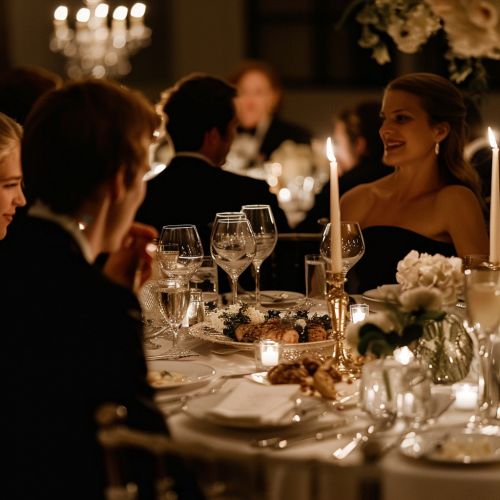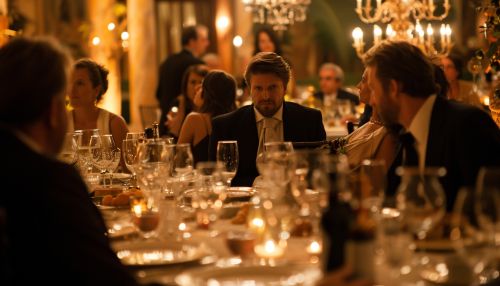Social Status and Attraction
Social Status and Attraction
Social status and attraction are deeply intertwined concepts that have been studied extensively within the fields of psychology, sociology, and anthropology. The relationship between an individual's social standing and their attractiveness to others is complex, involving various factors such as economic resources, social influence, physical appearance, and cultural norms. This article delves into the multifaceted nature of social status and attraction, exploring theoretical frameworks, empirical findings, and cultural variations.


Theoretical Frameworks
Evolutionary Psychology
Evolutionary psychology posits that human behaviors, including those related to social status and attraction, have been shaped by evolutionary pressures. According to this perspective, individuals with higher social status are often perceived as more attractive because they are more likely to provide resources, protection, and better genetic material for offspring. This theory is supported by studies showing that traits such as wealth, power, and social influence are often considered attractive across different cultures.
Social Exchange Theory
Social exchange theory suggests that relationships are formed and maintained based on the perceived costs and benefits. In the context of social status and attraction, individuals are likely to be attracted to those who can offer higher social status, economic benefits, or other valuable resources. This theory emphasizes the role of reciprocity and mutual benefit in the formation of romantic and social relationships.
Cultural Capital
Pierre Bourdieu's concept of cultural capital provides another lens through which to view the relationship between social status and attraction. Cultural capital refers to non-economic assets that enable social mobility, such as education, intellect, style of speech, and even physical appearance. Individuals with high cultural capital are often perceived as more attractive because they embody the values and norms of the dominant social group.
Empirical Findings
Physical Attractiveness
Physical attractiveness is a significant factor in social status and attraction. Research has shown that individuals who are considered physically attractive are often attributed higher social status and are more likely to receive positive social interactions. This phenomenon is known as the "halo effect," where one positive trait (physical attractiveness) leads to the assumption of other positive traits (such as intelligence or kindness).
Economic Resources
Economic resources play a crucial role in social status and attraction. Studies have consistently found that individuals with higher income, wealth, or financial stability are perceived as more attractive. This is particularly evident in societies where economic disparity is pronounced, and financial resources are a key determinant of social mobility and quality of life.
Social Influence
Social influence, or the ability to affect others' behaviors and attitudes, is another important aspect of social status. Individuals who hold positions of power or authority, such as leaders, celebrities, or influencers, often enjoy higher levels of attraction. This is partly because social influence is associated with competence, confidence, and the ability to provide social and material benefits.
Cultural Variations
Western Societies
In Western societies, social status and attraction are often linked to individual achievements, such as career success, educational attainment, and personal wealth. Physical attractiveness also plays a significant role, with media and popular culture heavily influencing societal standards of beauty and desirability.
Eastern Societies
In many Eastern societies, social status and attraction are more closely tied to family background, social connections, and adherence to cultural norms. For example, in countries like Japan and China, the concept of "face" (social reputation and honor) is crucial, and individuals from respected families or with strong social networks are often considered more attractive.
Tribal and Indigenous Cultures
In tribal and indigenous cultures, social status and attraction can be influenced by different factors, such as age, wisdom, and contributions to the community. Physical attractiveness may be defined by unique cultural standards, and social status is often linked to roles and responsibilities within the tribe or community.
Psychological Mechanisms
Mate Selection
Mate selection is a critical area where social status and attraction intersect. Evolutionary theories suggest that individuals seek partners who can provide the best possible genetic material and resources for offspring. High social status often signals these qualities, making individuals with higher status more attractive as potential mates.
Self-Esteem and Social Comparison
Self-esteem and social comparison processes also play a role in how social status influences attraction. Individuals often compare themselves to others in their social environment, and those who perceive themselves as having higher social status may experience increased self-esteem and confidence, which can enhance their attractiveness to others.
Social Identity Theory
Social identity theory posits that individuals derive part of their self-concept from their membership in social groups. High social status within a group can enhance an individual's social identity, making them more attractive to others both within and outside the group. This theory highlights the importance of group dynamics and social context in understanding attraction.
Implications for Relationships
Romantic Relationships
In romantic relationships, social status can influence partner selection, relationship satisfaction, and long-term stability. Partners with similar social status are often more compatible, as they share similar values, lifestyles, and social networks. However, disparities in social status can lead to power imbalances and conflicts, affecting relationship dynamics.
Friendships
Social status also affects friendships, with individuals often forming social bonds with those of similar or higher status. High-status individuals may have more social capital, making them attractive as friends due to the potential benefits they can provide. Conversely, friendships with lower-status individuals may be perceived as less beneficial, although they can offer emotional support and companionship.
Professional Relationships
In professional settings, social status can impact workplace dynamics, career advancement, and networking opportunities. High-status individuals often have greater access to resources, mentorship, and influential connections, making them attractive as colleagues and collaborators. Understanding the role of social status in professional relationships is crucial for navigating organizational hierarchies and achieving career success.
Conclusion
The relationship between social status and attraction is a multifaceted and dynamic interplay of psychological, social, and cultural factors. Understanding this relationship requires a comprehensive examination of theoretical frameworks, empirical findings, and cultural variations. By exploring these dimensions, we gain deeper insights into how social status influences human behavior, relationships, and societal structures.
